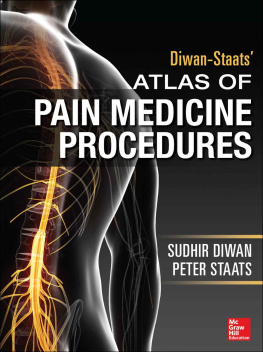CarTech
CarTech, Inc.
39966 Grand Avenue
North Branch, MN 55056
Phone: 651-277-1200 or 800-551-4754
Fax: 651-277-1203
www.cartechbooks.com
2012 by David Vizard
All rights reserved. No part of this publication may be reproduced or utilized in any form or by any means, electronic or mechanical, including photocopying, recording, or by any information storage and retrieval system, without prior permission from the Author. All text, photographs, and artwork are the property of the Author unless otherwise noted or credited.
The information in this work is true and complete to the best of our knowledge. However, all information is presented without any guarantee on the part of the Author or Publisher, who also disclaim any liability incurred in connection with the use of the information.
All trademarks, trade names, model names and numbers, and other product designations referred to herein are the property of their respective owners and are used solely for identification purposes. This work is a publication of CarTech, Inc., and has not been licensed, approved, sponsored, or endorsed by any other person or entity.
Edit by Paul Johnson
Layout by Monica Seiberlich
ISBN 978-1-61325-095-2
Item No. SA268
Front Cover:
Cleaning up the intake and exhaust bowls is one of the first steps you can take to improve airflow. You must choose the right grinding tip for the material of the head, select the correct speed for the rotary tool, and use a delicate touch. With experience, you can achieve some very impressive results.
Title Page:
The moment of truth arrives at the flow bench. The data verifies the effectiveness of porting work. Glyn (left) and Nick (right) Swift are not just Swift in name. They build some of Englands fastest Mini Coopers, and it all starts here on the flow bench. This particular unit is a highly instrumented Superflow 110.
Back Cover Photos
Top Left:
A big-block Chevy Dart Iron Eagle done by a first-time porter using the guidelines laid out in this book. The resultant flow and power curves demonstrate the success of these heads.
Top Right:
The port bowl is highlighted in red so the white background stands out. You can see that a fair portion of the back of the intake valve on this TFS Ford Mod motor head would be visible. On the stock heads, none of the valve is even close to being visible.
Middle Left:
Changes to the chamber of the Ultra Pro-modified 427 Corvette head were minimal. In this instance the hard work was in the form of the fuel shear ramp. Getting this to work and improving flow was not an easy task.
Middle Right:
When a standard 45-degree seat is used, back cutting the intake valve with a 30-degree angle helps form a venturi-like shape between the head and valve seat at low lift. Though usually only a minor aid to high-lift flow, it usually aids low-lift flow measurably.
Bottom Left:
The form used for this finished seat job on both the intake and exhaust was a radius joining a 45-degree seat at 15 degrees.
Bottom Right:
This Computational Fluid Dynamics illustration shows a prototype port for one of Edelbrocks high-performance heads and illustrates the flow pattern.
CONTENTS


DEDICATION
To my loving and caring wife, Josephine


It is a little difficult to list David Vizards accomplishments on a single page but we will at least give you a taste of who he is. The first thing you might want to know is that he is a workaholic; and that should more than explain the 80 to 100 hours per week he puts into a career that is his passion.
He started porting heads with the aid of a flow bench in 1958 and since then has run near countless tests. The first engine he tested for power output was in 1960 using a hill with a constant gradient as the retarding force. This gave the output at one particular RPM that happened to be near peak. The following attempts to measure his engines output were by means of a homemade accelerometer and a lot of math.
His first chassis dyno test was in 1963 and his first engine dyno test was in 1964. To date he has run well over 500,000 dyno tests, most using the latest high-tech dynos of the day. Currently most of his dyno work is on a 2000 Dynamic Test Systems hybrid.
As a race engine builder his best year in competition netted a combined 169 first places, track records, pole positions, and championship winswith just eight engines. Of those eight, five powered the drivers to national championship wins. On four occasions his engines or engines built to his specs have won four championships by winning every race in the series contended.
Four different times he has entered a race series with vehicles he was unfamiliar with at the start of the season. In each case by less than halfway through the season his car was not just competitive but truly dominant.
As an inventor David has been responsible for numerous patents. At last count this was about 40 but the number of his patentable designs is probably five times that. Patents range from fuels to F1 cylinder heads. But some of his work is not really patentable. An example here was the Ford Anglia ground-effect Tunnel car he built in 1971. That was six years before the first Indy Car sported such technology.
As a driver David has, in the U.K., set lap records on every track he has raced on but one with cars he has built himself. The driving feats he most likes to remember were the beating of all the F1 cars on a slightly wet Prescott hill climb in his super-fast 1293 mini and at the British Grand Prix event in the supporting British Touring Car Championship race at Brands Hatch where he went from 28th on the grid to joint 1st into the first bend. Passing some 26 cars before the first corner must be some kind of record. As a driver he has finished everywhere from 1st to 7th in championships and has had two seasons when he won every race he competed in.









